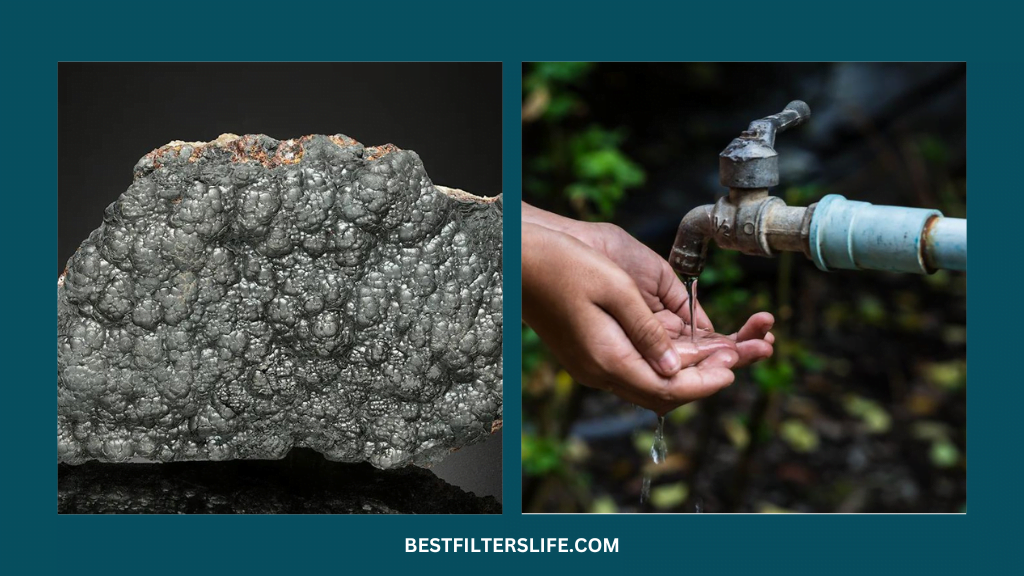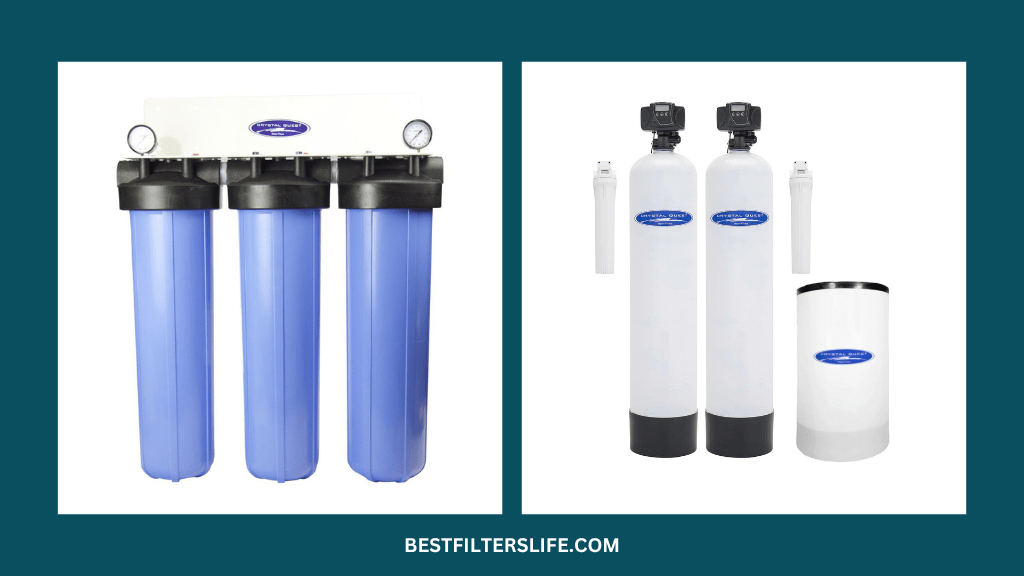America’s hidden health toxin—Arsenic’s carcinogenic grip on our water, affecting so many lives. About 2.1 million people get water from their private domestic wells, specifically in the Southwest, Midwest, and Northeast rural communities, giving the arsenic a wake-up call.
Its toxicity may force you to search for how to remove arsenic from water. Firstly, monitor its level and type by a certified lab before its reduction. Then, you can reduce its threat by using absorption, oxidation followed by filtration, reverse osmosis, distillation, and ion exchange, depending on your choice.
In the blog, we’ll be guiding the arsenic contamination, its types, testing, and the most effective ways to remove it from the drinking water. Let’s start with it!
Arsenic Contamination: Know About Your Well Water
Arsenic is a natural element that occurs in the earth’s mineral deposits, soils, and groundwater. It is exposed to water, soil, and air naturally due to the weathering of rocks and minerals, as well as human activities like mining.
Arsenic in drinking water is tasteless and odorless but has proven to be a highly cancerous element. When it is exposed to the well water for extended periods, it can pose serious health risks, which is known as arsenic contamination. It has become a major issue in many states, including Arizona, New Mexico, parts of Nevada, Minnesota, and a few parts of New England.
How does Arsenic Get into Drinking Water?
Arsenic is exposed to drinking water in various ways, such as:
- Rainwater or snow seeping through the earth’s rock and soil
- Agricultural and industrial pollution
- Through mining
- Arsenic-containing pesticides
- Seafood, dairy products, cereals, and meat can be dietary sources of arsenic.
- Can be exposed to natural inorganic arsenic content of tobacco
Types of Arsenic in Well Water

When you’re moving toward treating your well water against arsenic, it is most important to detect the type. Arsenic in well water may be present in organic and inorganic, with arsenite and arsenate being the most common forms.
Arsenite or arsenic 3: It is the most mobile and toxic form, which is harder to eliminate by conventional treatment methods, including adsorption or coagulation/flocculation. You may need a specialized media such as oxidation to change the arsenic 3 into arsenic 5.
Arsenate or arsenic 5: Although still harmful, arsenate is generally considered to be less toxic than arsenite. It is easier to remove through treatment processes, including coagulation/flocculation, ion exchange, adsorption, and oxidation followed by filtration.
Safe Levels of Arsenic in Drinking Water
In the United States, the EPA has established a Maximum Contaminant Level (MCL) for arsenic in drinking water, 10 micrograms per liter (µg/L) or parts per billion (ppb). It is generally considered safe, but the exceeding amount will need to be monitored.
However, the MCLG level at which there would be no adverse health effects should be zero. It may seem impossible because we can’t control the amount of natural elements exposed to the environment, but we can remove them by using various treatments.
How to Test for Arsenic in Water
Before removing arsenic from well water, it is crucial to know how much levels of arsenic are present in your water supply. Here’s how you can test your well water for arsenic contamination
1. Contact Your Local Authority
Every year, the EPA gets a quality report from the water municipal community of an area to maintain water quality standards.
Suppose you think your water could have elevated levels of arsenic. In that case, you can demand a copy of the monthly water quality report from your local health department or environmental agency.
2. Arsenic Water Testing Kit
You can also buy arsenic water testing kits from retail shops or online stores. The kit will only help to determine the presence or absence of arsenic in well water. It wouldn’t entertain you to the exact level.
3. Test by a Certified Laboratory
If you’re unable to get a yearly report or your local authorities don’t provide testing services, the certified laboratory is the best choice.
First, ensure the lab is certified, such as the Environmental Laboratory Accreditation Program (ELAP), then send your water sample to a lab. They will analyze the samples for arsenic levels and type. It may take a few days to several weeks to receive the results. Once you receive the results, compare the arsenic levels with EPA guidelines. If levels are elevated, take quick action by installing a treatment system.
Further, we suggest measuring your blood arsenic levels and consulting with a medical expert to determine the amount of arsenic in your body, duration of exposure, and its type. It would be the best suggestion to prevent any health effects.
How Does Arsenic Affect the Body
High levels of arsenic for long-term exposure are associated with health effects such as cancer, thickening and discoloration of the skin, cardiovascular issues, neurological disabilities, and some others.
Short-term exposure was also found to be associated with stomach pain, nausea, vomiting, diarrhea, headaches, weakness, and even death.
People with weak immune systems are more susceptible, as a study found low levels (≥0.005 milligrams/liter (mg/L)) of arsenic from drinking water can lower IQ scores in children.
How Do You Remove Arsenic From Water?

Water filter systems that can help to get arsenic-free water are as follows:
1. Ion Exchange— Best for Arsenic 5
Ion exchange is used in water softeners and deionized water filters to remove various heavy metals and hardness from the well water. It is a treatment process that works on the basis of exchanging and removing unwanted ions, such as arsenic, from the drinking water.
Ions are exchanged at solid resin or adsorbent material, which is negatively charged. In the context of arsenic removal, a specific type of ion exchange resin known as anion exchange resin is used. As the water passes through the resin bed, the arsenate ions (As(V)) are adsorbed onto the resin and are removed from the water.
After prolonged use, the resin bed can become saturated with arsenic ions. So, it is important to maintain and flush it with a chemical solution such as sodium chloride or sodium hydroxide to maintain its capability. The anion exchange can be installed as a whole-house water filter system or a post-treatment after iron or sediment filters.
The whole-house anion exchange not only removes arsenic 5 (not efficient against arsenic 3) but also puts its best efforts into removing heavy metals and minerals. However, if other impurities are your concern, then it would be better to install a pre-filter treatment. Sometimes, it may lower the water pH. In this case, you may need neutralization to avoid corrosion on the plumbing.
2. Absorption Method— Best for Arsenic 5
It is one of the most inexpensive ways to remove arsenic type 5 from the drinking water. This method uses a natural type of media that works on the principle of absorption mechanism.
Iron Oxide-Based Media: it is one of the natural methods of arsenic removal. Its media is made with iron hydroxide or iron oxide-coated sands that bind and absorb arsenic type 5 and remove it effectively. It is widely available and can be used in filtration systems.
Activated alumina: it is another natural way of removing both arsenic (arsenic 3 and 5) and fluoride from well water. It is made up of oxides alumina, which is a porous material with a high affinity to absorb arsenic.
Similarly, you can also use activated carbon media and biochar with iron-enhanced activity to remove arsenic in well water. However, the removal of arsenic depends on various factors such as:
- pH levels should be optimum range from 5 to 6
- It shouldn’t have a higher temperature.
- competing ions should be less in water
- Longer contact time between the water and the activated alumina
3. Oxidizing+Filtration— Best for Arsenic 3
Arsenic III (arsenite) removal is ten times more toxic and difficult to remove from drinking water. Therefore, oxidizing media are the best and cheapest way to convert type 3 into type 5, which can be filtered out by using adsorption, precipitation methods, or typical filtre. Oxidizing media that can be used for arsenic 3, ferrous iron, also for fluoride are as follows:
Chlorination: it is a strong and effective oxidizing agent that converts arsenic 3 to arsenic 5 by redox reaction. Not only this, it is also very effective in removing bacteria, viruses, and even ferrous iron from the well water.
Shock chlorination is a considerable procedure to remove microorganisms, iron bacteria, and arsenic 3, which is filtered out by using a water filter. In this method, a high concentration of chlorine is added, and leave the water in the open air to remove the extra chlorine smell.
Greensand Filter: It is one of the best filters used to remove high levels of iron, manganese, and arsenic from the well water. It works on the basis of both oxidation and adsorption processes. First, arsenic 3 is oxidized to arsenic V, which is less soluble in water and easily filtered out.
Potassium Permanganate, Ozone, and Hydrogen Peroxide (H2O2) can also be used as oxidizing agents to get rid of arsenic type 3, which is further removed by filtration. All media are readily available within the treatment systems, but the choice depends on water pH, the level of arsenic, contaminations, and budget.
Related Articles:
4. Reverse Osmosis Water Filtration— Best For Arsenic 5
Reverse osmosis is the best water filter for bacteria, viruses, heavy metals, pesticides, microplastics, and many more. It works by passing the water through a semi-permeable micron membrane that traps the impurities and allows the filtered water to pass. It removes arsenic 5 up to 90%, but for arsenic 3, manganese, or iron, you may need pre-treatment, such as oxidation.
You can install the RO systems on point-of-use (POU) systems, including countertops and under-sink, which are less expensive than point-of-entry or whole-house reverse osmosis filters. However, the POE RO systems allow filtered water for cooking, bathing, washing, and even gardening.
Although reverse osmosis is an efficient filter, it can waste a lot of water, from 2 to 10 gallons, depending on the model and brand. Besides, more contamination can clog the pores, such as arsenic, so you may need to maintain and replace the water filter cartridges on time.
5. Water Distillation— Best for Arsenic Type 3 and 5
One of the best methods to remove all types of arsenic is distillation. It is highly efficient in removing heavy metals such as arsenic, microorganisms, and many others. It involves the boiling of water until the steam rises, and the steam is collected, cooled, and converted into liquid, which is distilled and purified.
Usually, point-of-use water distillers have water boilers where the arsenic and other contaminants are left behind after heating, and distilled water is collected in a tank. Neither you need to oxidize arsenic nor a pre-treatment system for removal.
It is the most efficient solution to all contamination problems, including 98% of arsenic. For its proper working capacity, you must clean the boiling chamber and heating coils.
It can be your long-lasting investment of up to 10 years. Still, the high electricity bills, energy consumption, and price make it not suitable for various individuals.
Related Articles:
Conclusion
In conclusion, addressing arsenic contamination in well water is of paramount importance to ensure the safety of public health. It is a toxic element that can have severe health consequences when consumed in elevated concentrations.
Fortunately, there are effective methods for removing arsenic from well water, including adsorption, oxidation, reverse osmosis, distillation, and ion exchange techniques.
The selection of the right treatment method depends on the presence of other contaminants, water pH, temperature, and budget. It’s crucial to test your well water regularly for arsenic levels to determine the most suitable approach for your situation.





